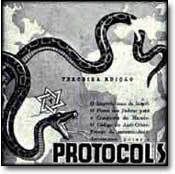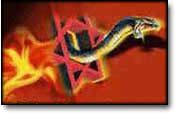Your Daily dose of Holocau$t BERLIN - Welcome to Grosse Allee 5 in the town of Bad Arolsen. Here you will find just one thing: documents. Fifty million card cabinets containing the names of 17.5 million people who were persecuted during the Third Reich. Gypsies, social democrats, homosexuals, communists, people the Nazis just wanted to have taken care of, and mainly - Jews. A tour of one of the rooms with Kathrin Flor, the head of ITS communications, is a lesson in history unlike any other. In the space of mere meters, without the grandiose display of a museum, the most tragically interesting stories of the 20th century can be found. This is what can be read today on the businesslike document: The committee operates in support of the following objectives: 1. Creation of families with many biologically and racially pure children 2. Support for single mothers that can bring biologically and racially pure children into the world 3. Support for such children Signed: Heinrich Himmler Date: 24.12.1937 Jumping seven years ahead in time, the next binder delves the reader deep into the period of the most wide-scale, systematic murder known to humanity. The document is dated October 12, 1944 and listed under the anemic title "List of Names" containing the personal details of 1,000 people - 700 men and 300 women, all Jews. Number 672 on the list: Yitzhak Stern, Profession: Accountant. This is the original Schindler's list. (To view the full list, click here) "Speisezettel – Auschwitz" is written on another document randomly pulled from the shelf. It is the list of food the prisoners who passed the selection received in the notorious Auschwitz death camp. For instance, on Monday 7.12.1942, a "hard laborer" in Auschwitz received 450 grams of bread, 30 grams of margarine, and 125 grams of cheese. If you open the "menu" to two years later, this measly ration seems like a dream come true.
Satan's administration: Take this Journey into Zionist death records
"Satan's administration" is what Udo Jost, the head of archives at Bad Arolsen, calls the world's largest archives of the Nazi horrors. The documents housed here were found in thick binders throughout Germany and occupied Europe starting in 1945, and include records of factory-like operations that had to show production and expediency. In them are descriptions of the camps, of the deranged plans, of those who remained alive, and of the enormous majority that did not survive. Support for birthing racially pure descendents
An interesting detail for those who like the movie: The list typed up by Yitzhak Stern himself as re-enacted in the Steven Spielberg's movie did not survive the war. The historical information surrounding Schindler's List comes from testimonies given by the factory workers. The list in the archive today was typed up by one of Schindler's employees, during one of the transfers between camps. He gave the only copy he managed to keep to the archive in Bad Arolsen in 1958.
Other documents carry enormously weighty importance when confronting various distorted and false claims related to the Holocaust. For instance, the claim that the average German would not have necessarily known about the forced labor camps and what was taking place in them. To this end, Flor took out a book listing prisoners at Dachau and Buchenwald. On a daily basis, it was listed precisely where each one of the thousands of prisoners worked – in which village, town, or German city he was forced to work in, dressed in prisoners' garb. Details down to the margarine
More? http://www.ynetnews.com/articles/0,7340,L-3888350,00.html
Friday, 14 May 2010
Satan's administration: Journey into Nazi death records
Posted @
19:03
![]()
Subscribe to:
Post Comments (Atom)
![[9_10_s22.jpg]](https://blogger.googleusercontent.com/img/b/R29vZ2xl/AVvXsEjTXnQay9wzz0E6nVHrVhaHKoq_zYXDqZjijHlNDQzj90MZzInrCuVX4ciFYCiBfZ7lhlgr2bBhhnl7ddWbhdih5JbXjQYbA605TNyiq046bQqjG2A4S-nHTmh1VBTQSG6tmc23wq47QQ/s1600/9_10_s22.jpg)




No comments:
Post a Comment